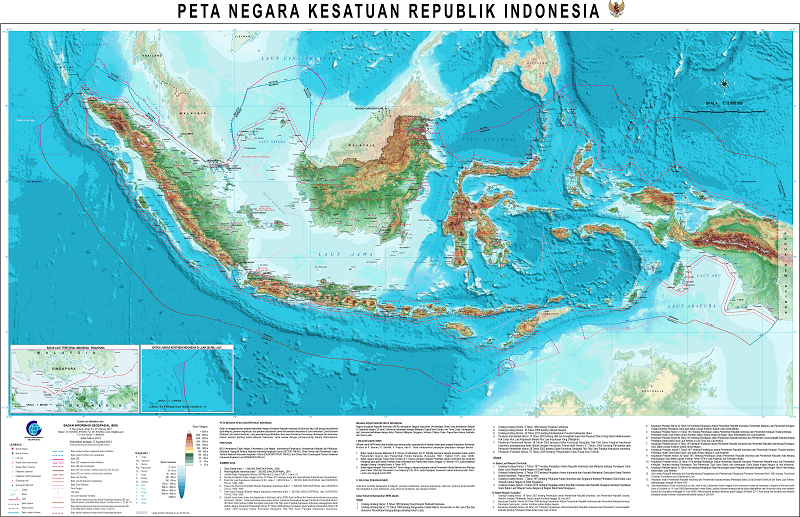

Image Courtesy: BADAN INFORMASI GEOSPASIAL (BIG)

The purpose of research is to understand the global change, in particular to assess its effect to, and its driving caused by, the Indonesian archipelago. To detect the extreme phenomena, the normal condition, at first, should be understood. For this purpose we are analyzing the long period ocean data observed by the satellites: Sea Surface Temperature (SST), zonal-component of wind speed (U-WS) and Rainfall Rate (RR). This gIndonesian Ocean Archive (IOA)h website provides our ocean observed results to the world and drive the understandings about the Indonesian ocean phenomena. The research targets are considered as below:
Acknowledgment: We express our sincere gratitude for those institutes to let us use their data and software. |
 March 11, 2016
March 11, 2016IOA Website is opened!  Research details and methodologies
Research details and methodologiesRefer to papers below: I Dewa Nyoman Nurweda Putra and Tasuku Tanaka, gThe local characteristics of Indonesian Seas and its possible connection with ENSO and IOD: Ten years analysis of satellite remote sensing data,h Earth Science Research, vol. 2, no. 2, pp. 153-180, 2013. I Dewa Nyoman Nurweda Putra and Tasuku Tanaka, gA novel approach to improve the ENSO and IOD signals detection in the Indonesian Seas,h Proc. 34th ACRS, Bali, 2013. Satellite products Description of satellite products and their period used in this research. |




